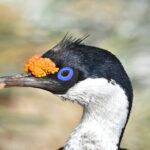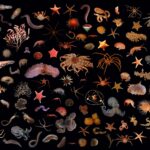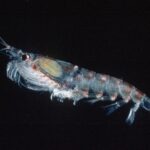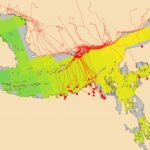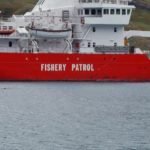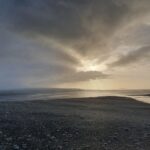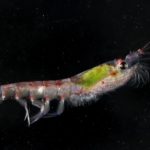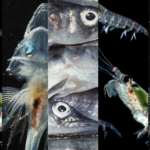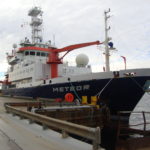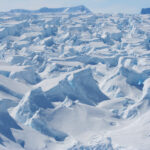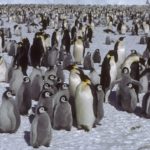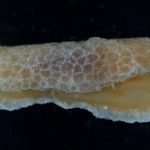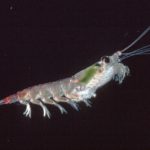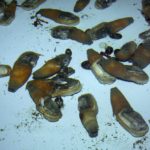Remote and hostile, Antarctica harbours some of the most amazing creatures on the planet. It is also a powerful natural laboratory for studying biodiversity, evolution and the impacts of climate change. Cut off from the rest of planet, Antarctica’s isolation and its cold climate have allowed some unique species to evolve.
Mostly covered in ice and snow, Antarctica is the driest, coldest and windiest continent on Earth. Little of its land surface can support life, so the communities of plants and animals that survive there consist of only a small number of species living in simple relationships. Because of the simplicity of these communities, Antarctica is an exceptionally useful place for scientists to uncover how ecosystems work.
Some of the creatures in these communities are particularly interesting. Known as nematodes, their ancestors survived on tiny areas of land left uncovered during the last ice ages, more than one million years ago. By studying these nematodes, scientists at British Antarctic Survey (BAS) are able to increase our understanding of evolution and help reconstruct Antarctica’s glacial history.
Unlike the land, the seas around Antarctica are home to a rich and diverse group of species that have evolved some unique ways of coping with the cold. Some Antarctic fish, for example, are the only vertebrates in the world that do not use red blood cells to carry oxygen around their bodies.
But because they are so well adapted to the cold, some of these species may not be able to cope with life in a warmer world. Climate change is likely to have a major impact on Antarctic species. From their research stations on and around the Antarctic Peninsula – one of the fastest warming parts of the planet – BAS scientists are well placed to study how these species are responding to climate change.
Compared with our understanding of the continent’s plants and animals, we know very little about Antarctica’s microbial life. Invisible to the naked eye, these organisms play a vital role in Antarctic ecosystems and, because they may help us produce new antibiotics and other compounds, are rich but untapped resource. At BAS, scientists are using state-of-the-art genetic methods to study the DNA of these microbes and, hopefully, harness their potential.
Globally-important populations of seabirds breed at South Georgia. However, human-induced impacts have led to the decline of many seabird populations. Four species of albatrosses and white-chinned petrels have shown persistent …
The evolution and ecology of Antarctic sea floor communities is a UKRI Future Leaders Fellowship, led by Dr Rowan Whittle, looking at the past, present and future of life at …
Whales are the largest krill predators in the UK Overseas territory of South Georgia, yet their impacts on krill stocks are poorly understood. Recently, whale surveys revealed high summer abundance …
CONSEC is addressing the challenge to understand the links between the biodiversity, structure and function of Southern Ocean ecosystems and the impacts of rapid environmental changes to improve scientific knowledge …
In the AI for smart conservation project, BAS are collaborating with local ecologists and conservation agencies to develop decision-making tools informed by sea ice forecasts. By combining satellite observations, GPS …
The South Georgia Pelagic Biodiversity project is a Darwin-funded project, led by BAS, and in partnership with the Government of South Georgia and the South Sandwich Islands (GSGSSI) and the …
The polar regions are experiencing the most rapid climate change observed on Earth: temperatures are rising in some regions of the Arctic and Antarctic at more than double the global …
This Darwin Plus funded project aims to improve our understanding of how Antarctic krill, foraging whales and the krill fishery interact in space and time, to improve krill fishery management …
Fish bycatch is a global problem requiring accurate information to develop conservation and management strategies. Within the Antarctic krill fishery, fish and larval fish are regularly observed as bycatch. Improved …
The HEXPLORES project aims to explore for active hydrothermal vents in the Red Sea Rift. Although the Red Sea Rift hosts the world’s largest submarine metalliferous sulphide deposit, no active …
Page 1 of 51
2
3
…
5
»Last »
1 June, 2023
Concern is rising about tipping points in the Antarctic region (Armstrong et al., 2022). Recent heatwaves, changes in the Southern Ocean, and a reduction in the extent of Antarctic sea …
Page 1 of 4091
2
3
…
409
»Last »
17 March, 2014
Moss brought back to life after 1,500 years frozen in ice Researchers from the British Antarctic Survey and Reading University have demonstrated that, after over 1,500 years frozen in Antarctic …
12 February, 2014
Satellites help spot whales Scientists have demonstrated how new satellite technology can be used to count whales, and ultimately estimate their population size. Using Very High Resolution (VHR) satellite imagery, …
8 January, 2014
Antarctic emperor penguins may be adapting to warmer temperatures A new study of four Antarctic emperor penguin colonies suggest that unexpected breeding behaviour may be a sign that the birds …
9 December, 2013
BAS takes the lead in ambitious science programme to aid fishing industry and monitor effects of climate change on Europe’s shellfish The supply of shellfish we buy at the supermarket …
3 December, 2013
New species recovered from Amundsen Sea More than thirty new, and, as yet unclassified, species of marine life were discovered during a science expedition to the Amundsen Sea off Pine …
23 October, 2013
CCAMLR underway in Hobart The annual gathering of international Antarctic scientists and policy makers is under way at Hobart in Australia. Twenty-five delegations from around the world have arrived in …
13 September, 2013
Research on the dynamics of food webs The dynamics of food webs, networks of who-eats-whom interactions, are being highlighted in the August report of International Innovation, an open access European …
29 August, 2013
Moss growth in Antarctica linked to climate change Increases in temperature on the Antarctic Peninsula during the latter part of the 20th century were accompanied by an acceleration in moss …
21 August, 2013
Warming Antarctic seas likely to impact on krill habitats Antarctic krill are usually less than 6 cm in length but their size belies the major role they play in sustaining …
18 April, 2013
Age matters to Antarctic clams A new study of Antarctic clams reveals that age matters when it comes to adapting to the effects of climate change. The research provides new …
Page 19 of 20«
1
…
17
18
19
20
»Last »
